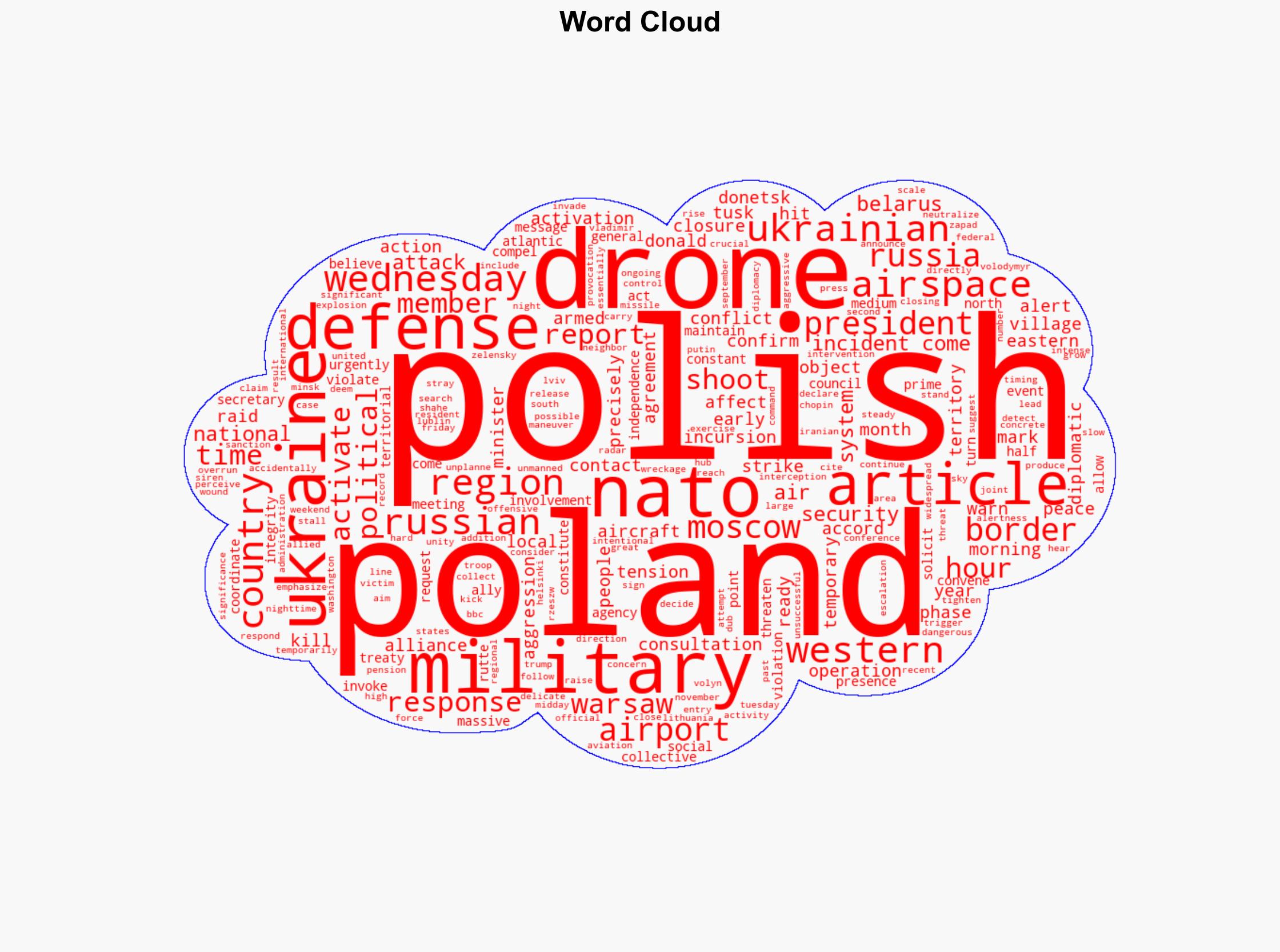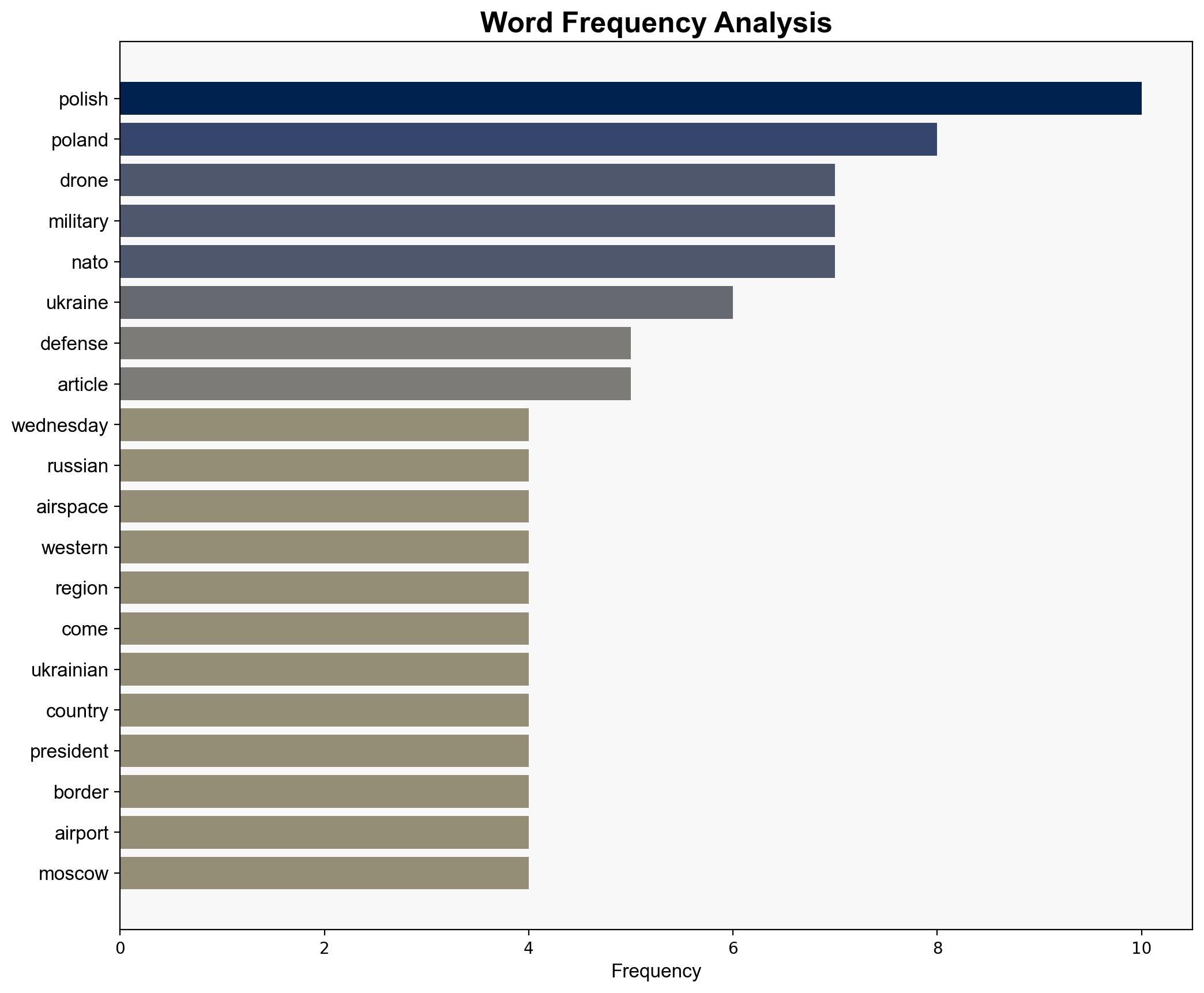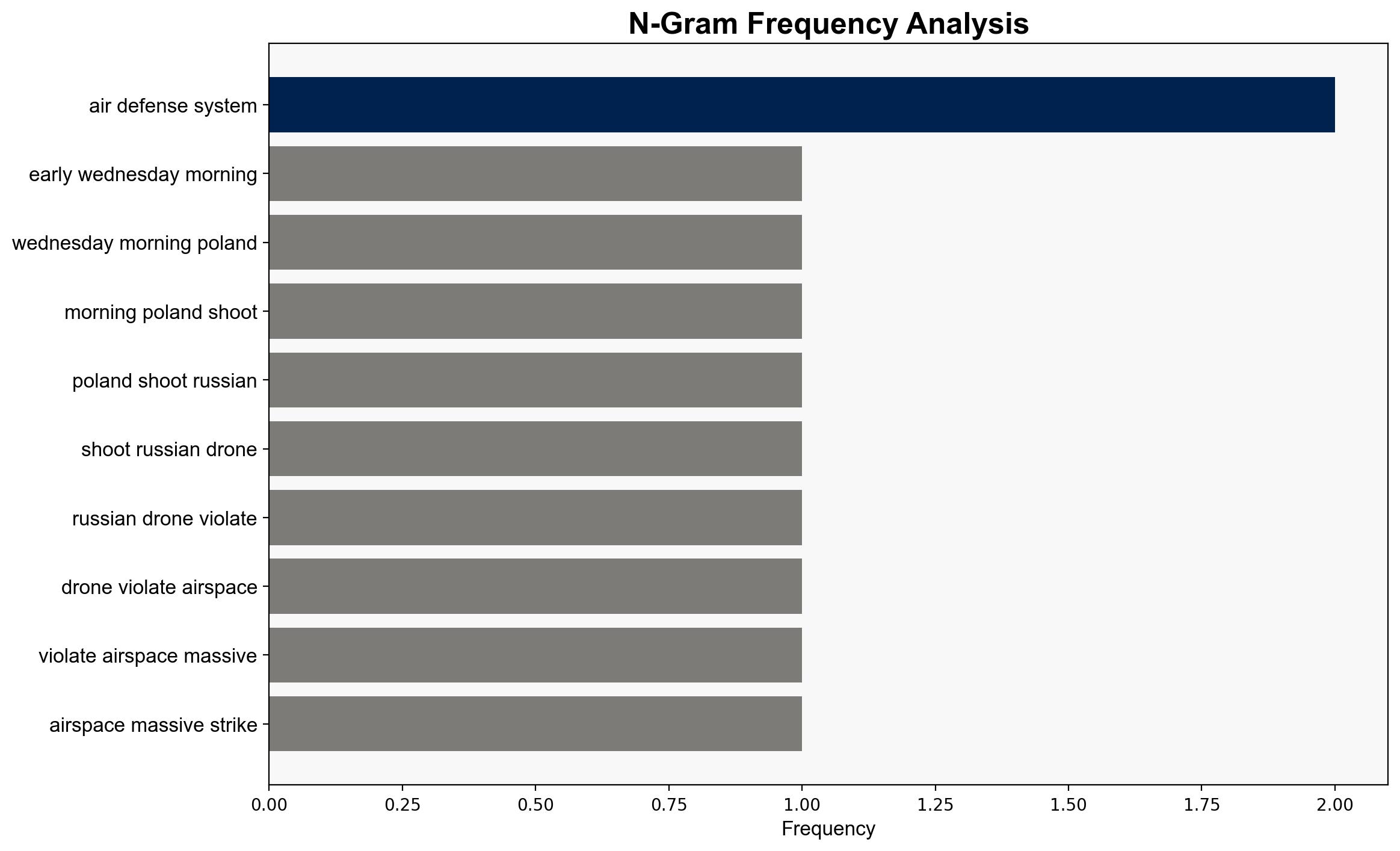Here’s What to Know About Poland Shooting Down Russian Drones – Wired
Published on: 2025-09-10
Intelligence Report: Here’s What to Know About Poland Shooting Down Russian Drones – Wired
1. BLUF (Bottom Line Up Front)
The most supported hypothesis is that the drone incursion was a deliberate act by Russia to test NATO’s response capabilities and resolve. Confidence level: Moderate. It is recommended that NATO enhances its air defense readiness and engages in diplomatic channels to de-escalate tensions while preparing for potential further provocations.
2. Competing Hypotheses
1. **Deliberate Provocation by Russia**: The drone incursion into Polish airspace was a calculated move by Russia to test NATO’s response and resolve, possibly as a precursor to further military actions or to distract from other strategic objectives.
2. **Accidental Incursion**: The drone entered Polish airspace unintentionally due to navigational errors or malfunction, with no deliberate aggressive intent from Russia.
Structured Analytic Technique: Analysis of Competing Hypotheses (ACH) was applied, weighing evidence such as the timing of the incident, historical context of Russian military exercises, and the response from NATO and Poland. The deliberate provocation hypothesis is better supported due to the strategic timing and context of regional military exercises.
3. Key Assumptions and Red Flags
– **Assumptions**: It is assumed that Russia has full control over its drone operations and that any incursion into NATO airspace would be intentional.
– **Red Flags**: The lack of immediate communication from Russia regarding the incident could indicate an intentional provocation. The absence of technical data on the drone’s navigation systems raises questions about the accidental incursion hypothesis.
– **Blind Spots**: Limited information on the drone’s flight path and technical capabilities may obscure understanding of the incident’s intent.
4. Implications and Strategic Risks
– **Escalation Risks**: The incident could lead to heightened military readiness and potential miscalculations, increasing the risk of conflict.
– **Geopolitical Tensions**: The event may strain diplomatic relations between NATO and Russia, complicating ongoing peace negotiations in the region.
– **Economic Impact**: Temporary airport closures could disrupt regional trade and logistics, affecting economic stability.
– **Cybersecurity Threats**: Potential for increased cyber operations as part of hybrid warfare tactics.
5. Recommendations and Outlook
- Enhance NATO air defense systems and readiness along the eastern flank to deter further provocations.
- Engage in diplomatic dialogue with Russia to clarify intentions and prevent escalation.
- Monitor regional military exercises for signs of further aggressive maneuvers.
- Scenario Projections:
- Best Case: Diplomatic engagement leads to de-escalation and improved communication channels.
- Worst Case: Continued provocations lead to military confrontation.
- Most Likely: Periodic provocations continue, maintaining a high level of tension without direct conflict.
6. Key Individuals and Entities
– Donald Tusk
– Volodymyr Zelensky
– Vladimir Putin
– Mark Rutte
7. Thematic Tags
national security threats, regional focus, military strategy, NATO-Russia relations





